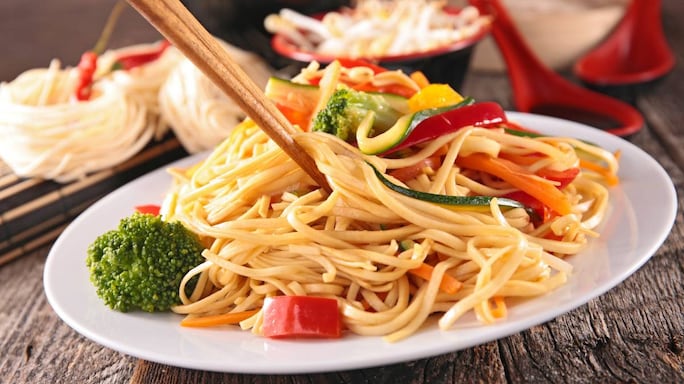- HOME
- /
- Better Living
- /
- Food
- /
Know Your Noodles And Have Fun With Them
From wheat to rice to egg, the world of noodles can be confusing for the uninitiated. But there’s help
 Noodles. Photo: Shutterstock
Noodles. Photo: Shutterstock
Who invented noodles has been a hotly-debated issue for decades. But if you go by a 2005 discovery, the world’s oldest noodles—4,000-year-old to be precise—were found from the Lajia archaeological site in China.
In India, its popularity cuts across age, region and community. Available in a variety of options, noodles can be confusing for the uninitiated. Here’s help for those who are looking to experiment with textures and flavours:
Egg Noodles
Deliciously smooth and slippery, egg noodles or Chinese egg noodles are made with wheat flour and eggs. The texture is more tender and delicate compared to the white flour (maida) noodles because of the egg. You can buy them pre-packaged or fresh from a store and boil the noodles before using them in a recipe. Because of their smooth texture, they are more versatile than regular noodles and can be used for a variety of preparations such Khao Soi, stir fry, soup, an Asian salad or can be simply had with a curry.
Glass Noodles
Believed to have originated in China, glass noodles are super thin, transparent and commonly made from the starch of mung bean or moong. They are great for making Vietnamese cold rolls, Asian soups, stir-fried dishes, and Thai salads. Typically sold in dried form, you need to soak them in hot water for about 10 minutes before eating or using them in a dish.
Wheat Noodles
As the name suggests, wheat noodles are prepared from wheat flour, water and salt and can be further tweaked to make egg noodles as well. Springy in texture, these noodles can be served hot or cold, with soups or tossed in a sauce, stir-fried or boiled. Wheat noodles are a healthier pick compared to white flour noodles.
White Flour Noodles
Made with refined flour (maida), these versatile noodles are one of the most popular picks when it comes to home-style Chinese cooking because they lend themselves well to all kinds of flavours. Whether you plan to make a vegetable chowmein with chilli paneer or an American chop suey, white flour noodles won’t disappoint you.
Rice Noodles
Suitable for all, including those with gluten intolerance or celiac disease, rice noodles are a healthier alternative to egg noodles. Made from rice flour, these noodles are neutral in flavour. They can be used in all traditional Asian recipes in place of regular noodles, such as stir-fries, Asian salads, rolls, and more. Like glass noodles, you need to soak them in boiling water for about 5 minutes until they turn tender, then drain the water, pat them dry and use.
Soba Noodles
These Japanese noodles are made from buckwheat flour, which makes them way healthier than most noodles. Soba contains nutrients like phosphorus, potassium and sodium along with essential amino acids. Slightly nutty in flavour, these gluten-free delicious noodles lend themselves well to all kinds of healthy Asian recipes. Now a popular offering at many cafes and restaurants, soba noodles are easy to cook at home as well.
Udon Noodles
A staple in Japanese cuisine, udon noodles are thick and flat, made of wheat flour. Slightly chewy yet soft in texture, these noodles have a neutral flavour and go well with more strong-flavoured ingredients such a shrimp paste or a fish sauce. They can also be served cold (like in a salad) with a dressing or in a chilled broth.






